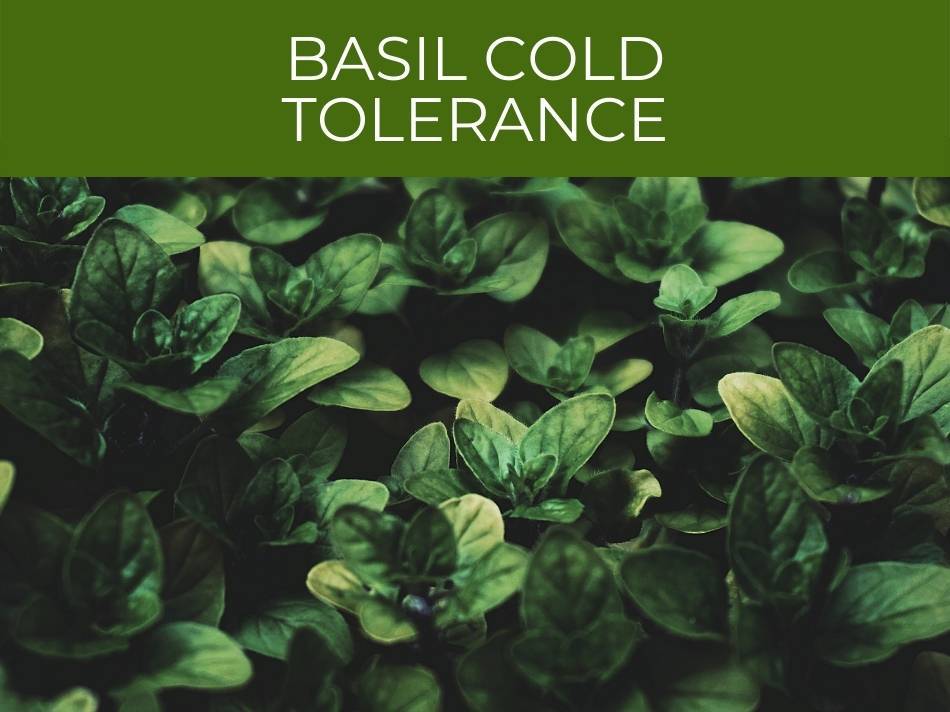Basil is a commonly loved herb the world over. Native to Asia, its popularity spread due to its astounding versatility. With so many uses, many have taken it upon themselves to grow their own basil, but this begs the question: can basil tolerate the cold during winter?
Though basil is impressive in its vast number of uses, the herb falls short when it comes to growing in cold temperatures. Basil thrives at 70-80 degrees F. Once the temperature drops below 50F (10C), health will quickly deteriorate; below freezing, basil quickly dies.
Before trying your green thumb at growing basil, it is important to know its limitations to cold, whether you can help it survive through winter, and whether there are any other cold-hardy varieties available.
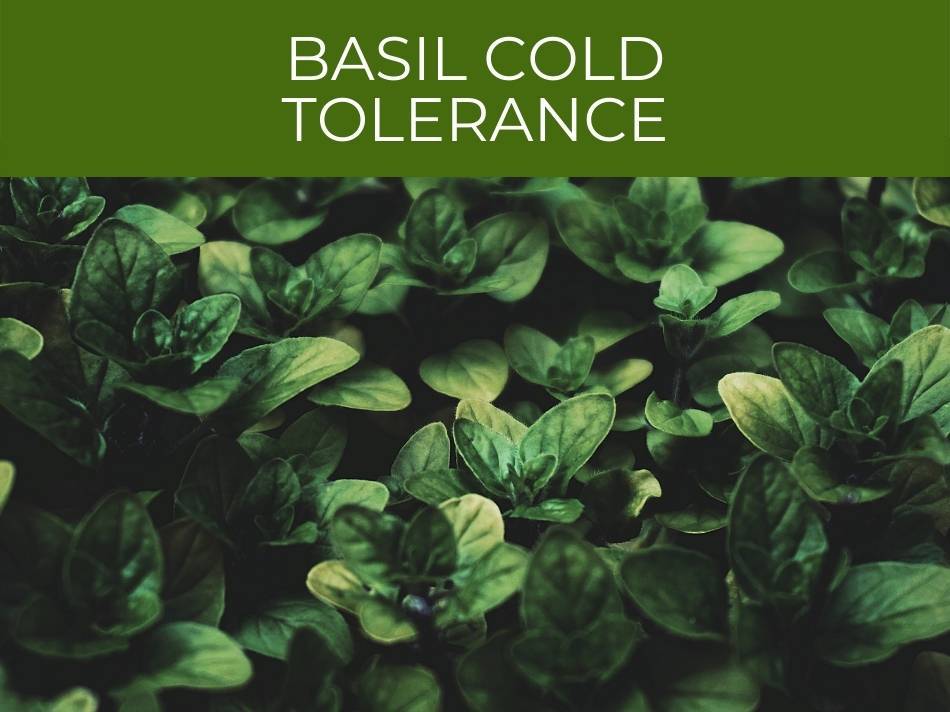
Basil Cold Tolerance
Basil is the quintessential plant to cultivate during the warm summer months.
But it is not designed to survive harsh cold weather conditions.
Basil is an annual herb, which means that it will only last for one growing season.
For optimal use, it is advised to plant the herb in spring so that you may harvest leaves during the summer.
Basil will show leaf damage and even necrosis when temperatures are below 50F (10C), and basil plants die with temperature below freezing. Basil grows best between 70 – 80F. Because of its sensitivity to cold, basil is grown as an annual herb.
Basil has a poor cold tolerance, but it may be possible to survive the winter in certain regions and within controlled environments.
See how cold tomatoes can tolerate.
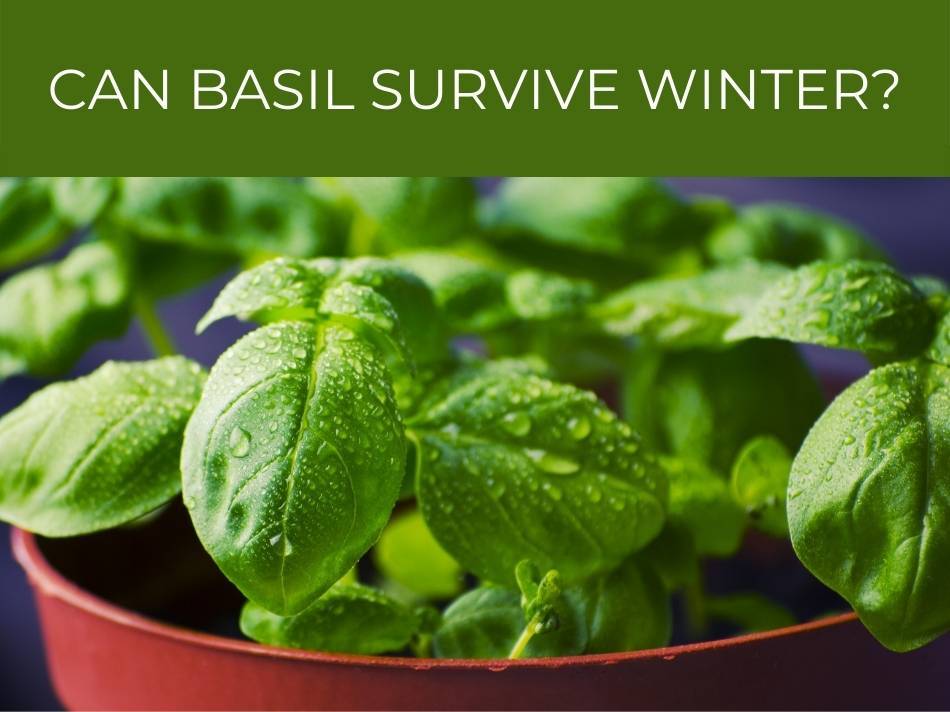
Can Basil Survive Winter?
In short, it depends.
Winter temperatures vary heavily within different regions across the globe.
Temperatures rarely drop low enough to stunt the growth of basil in all-year-round warm areas such as Thailand, Spain, and the Mediterranean.
In this case, yes, basil can survive winter.
But in the more common setting of cold winters, keeping basil alive becomes a little more challenging.
Although the herb can survive low temperatures for short bursts of time, it generally cannot survive this for longer than a day.
And if the temperature reaches freezing point, it will not make it past a few hours.
Basil cannot survive cold winter temperatures (below 50F or 10C) on its own. To keep basil alive during cold weather, use methods such as: cover the plant, add mulch around the base, or simply bring the plant inside.
Basil is an excellent house plant, and growing it in a warm, sunny space indoors can prolong its lifespan through both autumn and winter.
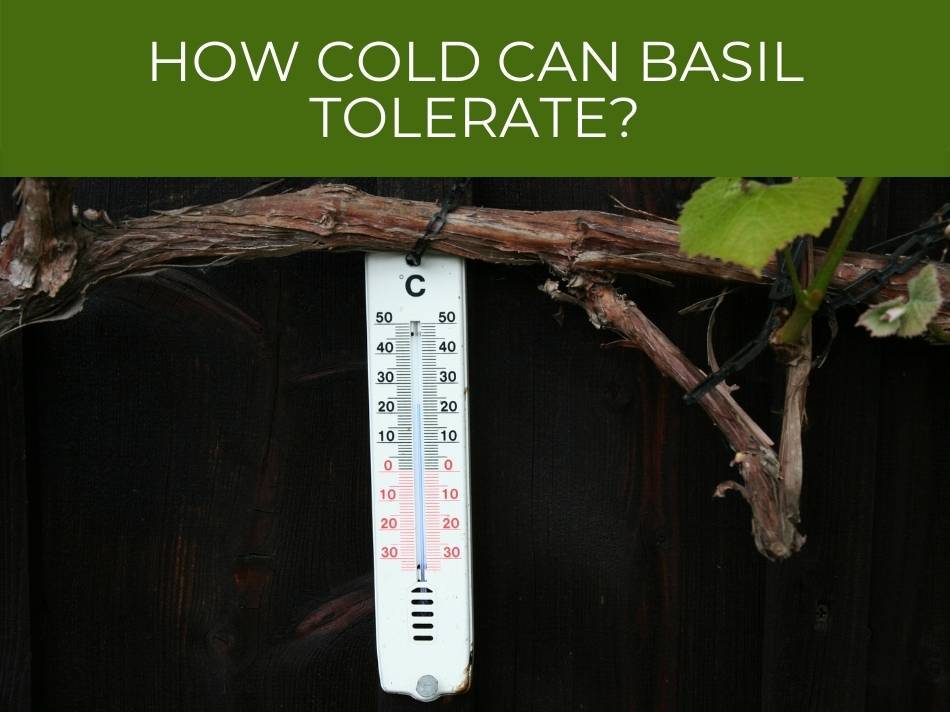
How Cold Can Basil Tolerate?
Depending on how low the temperature is, the basil may not die, but it will be subject to cold damage. Basil thrives between 70 – 80 degrees F; it needs to be kept very warm to be healthy.
Symptoms of cold damage include black or brown spots on the leaves, wilting, or curling.
By the time these symptoms kick in, you can almost be guaranteed that your basil has been affected by frost.
Early on, you may be able to prevent permanent harm if you move to overwinter your basil.
However, basil is unlikely to survive excessive cold damage.
Cold weather starts to become detrimental at 50 degrees F. This weather will not necessarily kill your basil, but it will stunt the plant’s growth in both speed and quantity of leaves. Temperatures below freezing will quickly kill basil plants.
If cold damage is limited to small areas of the herb, you may be able to save it by carefully pruning the affected portions.
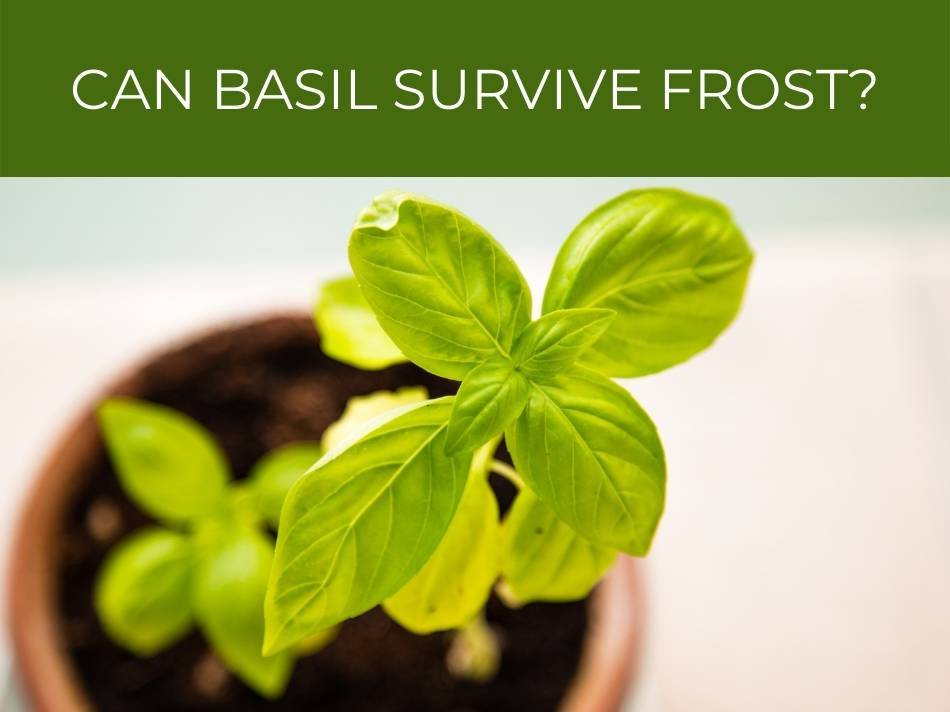
Can Basil Survive Frost?
Basil is very sensitive to frost as this occurs when temperatures reach freezing point (32 degrees F).
Basil cannot survive frost, and even temperatures below 50F (10C) will cause leaf damage (necrosis). To prevent damage from cold, basil plants should be taken indoors, or if left outdoors, covered and surrounded with mulch.
If you see unexpected frost appear outside where your basil is growing, be sure to remove the basil and transfer it to a pot inside your home as soon as possible.
See which is the best soil for indoor herbs.
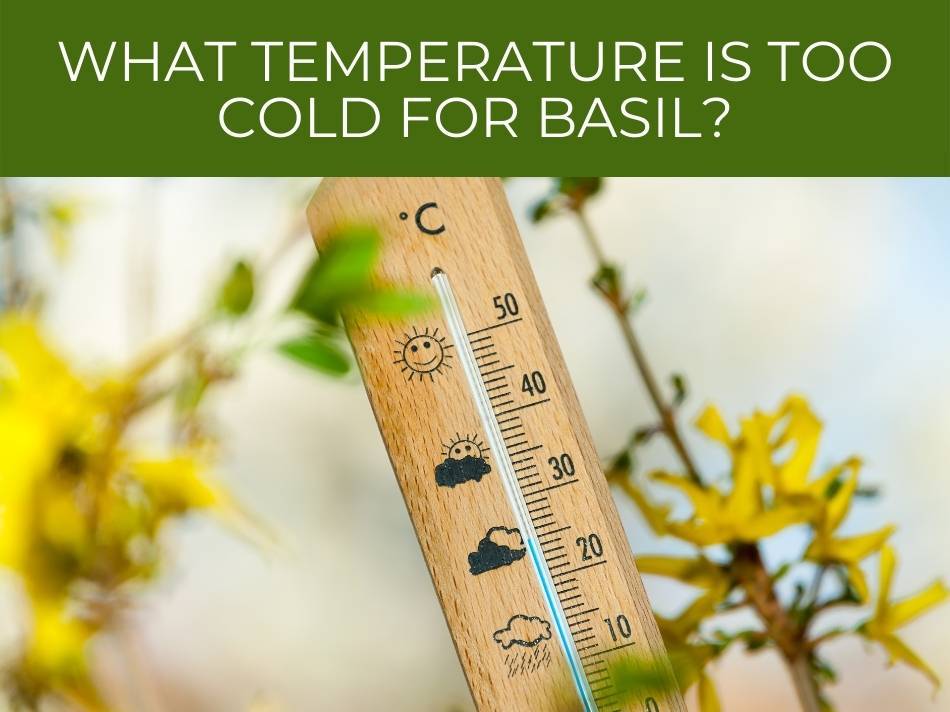
What Temperature Is Too Cold for Basil?
Basil plants cannot tolerate temperatures lower than 50 degrees F without sustaining some form of cold damage.
When cold damage is spotted early enough, it is possible to save the plant.
Any temperature lower than 50 degrees F is too cold for basil, but it becomes truly detrimental at freezing point (32 degrees F). The plant will start losing leaves or turning brown, and will die; so, basil is typically grown as an annual herb in temperate climates.
If temperatures in your region drop to those levels, it would be wise to grow your basil plant indoors from the start.
This way, any form of cold damage can be prevented entirely.
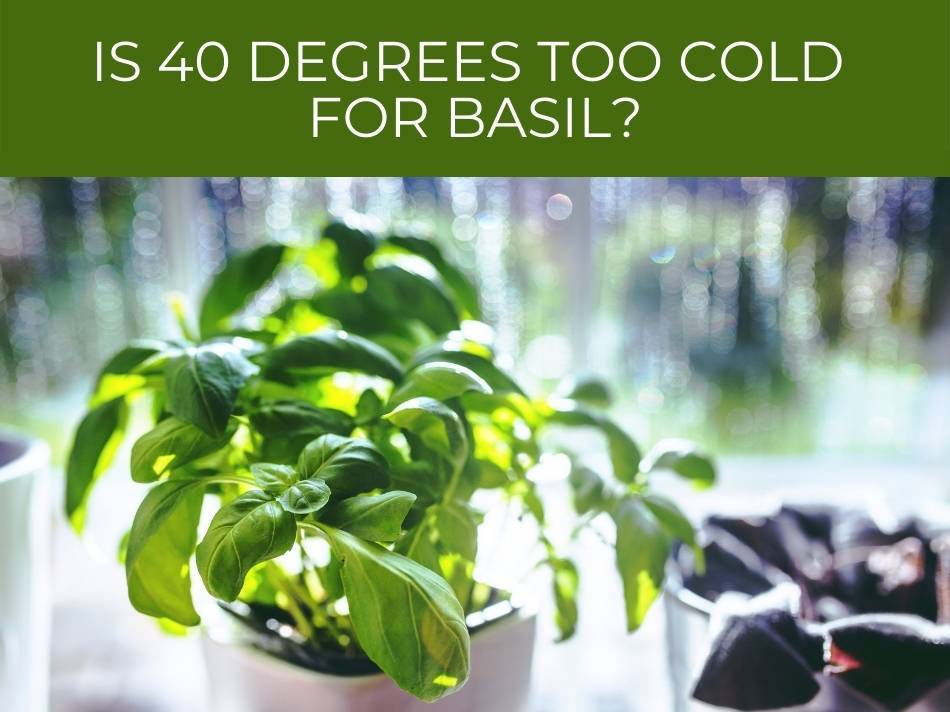
Is 40 Degrees Too Cold for Basil?
If you would like to maintain a healthy herb, 40 degrees F is too cold for basil.
Although a 40-degree temperature will not instantly kill the plant, it will cause mild to severe cold damage depending on the length of exposure.
Short exposures to 40-degree temperatures will typically cause leaf damage and necrosis, and long exposures will kill the plant. If you cannot move your plant indoors when temperatures drop to 40 degrees, covering or mulching bail plants can prevent damage.
See how you can use a mini greenhouse to grow plants year-round.
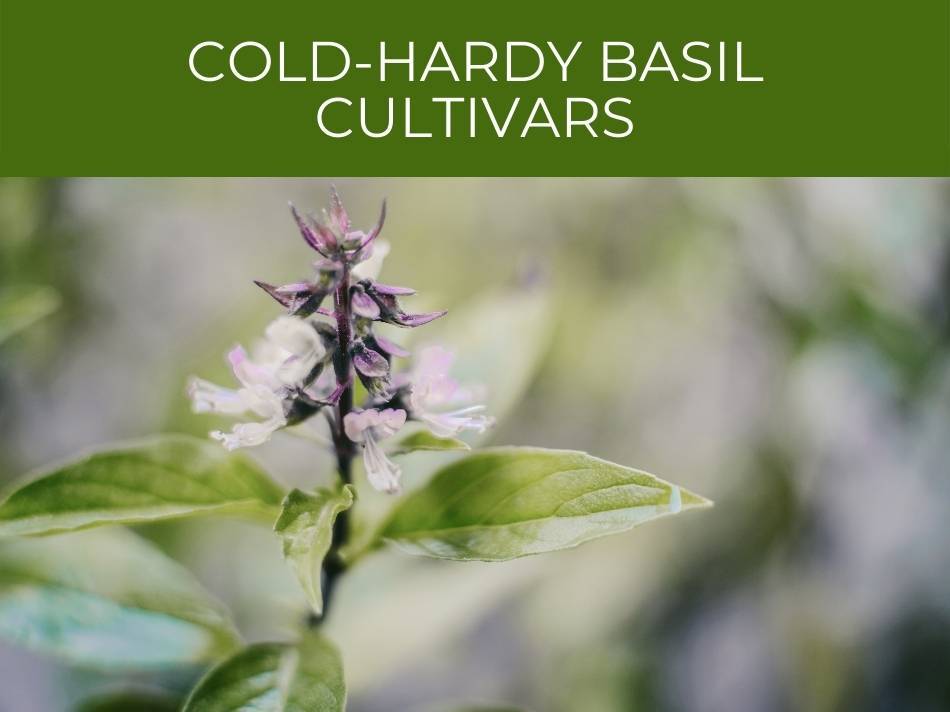
Cold-Hardy Basil Cultivars
You may be wondering whether there are any cold-hardy basil cultivars that could survive the winter months outdoors.
There appears to be one particular variety called Christmas basil that is more cold tolerant.
In some regions, this herb can survive up to Christmas.
Christmas basil may survive the cold weather for longer in some regions, but there is no guarantee. There’s no basil cultivar that is completely immune to cold, especially with temperature below 40 degrees. A warm climate (consistently above 60F) will ensure basil survives year-round.
If you prefer a herb that is cold-hardy and can grow during autumn and winter, you may try other flavourful herbs such as rosemary, thyme, sage, oregano, or parsley.
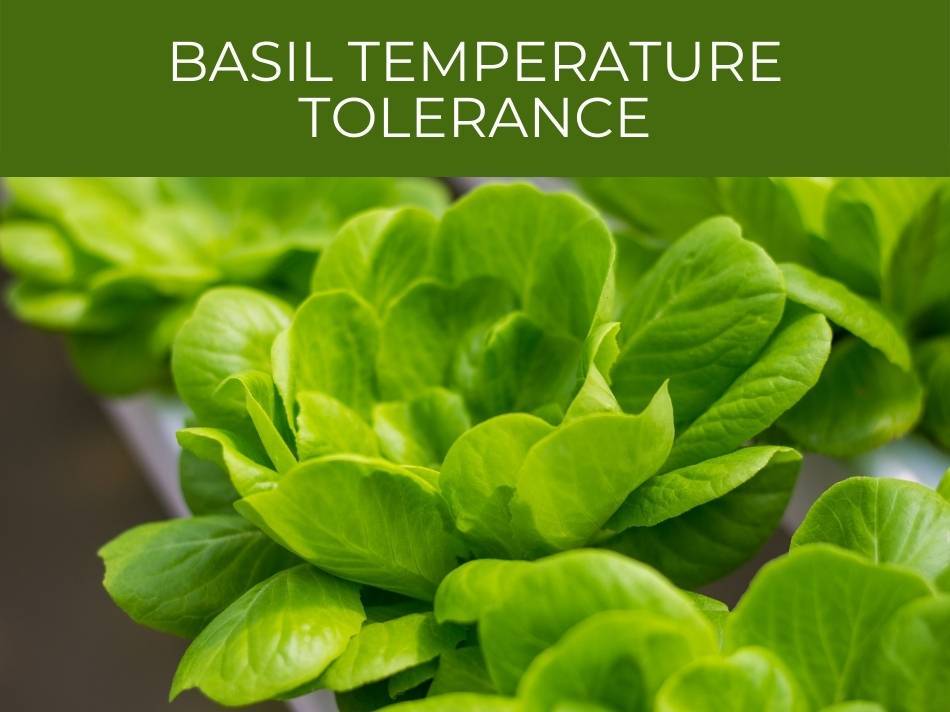
Basil Temperature Tolerance
Basil is a dish best served warm.
The plant flourishes during the warm summer months, so be sure to put protective measures in place once temperatures start to drop.
Basil can survive the winter month with the help of methods such as covering the plant, mulching, or moving the plant indoors to a warm, sunny spot.
Basil can tolerate temperatures above 50 degrees F; lower temperatures cause leaf damage and necrosis. When the temperature drops below freezing, basil plants quickly die. Basil best grows between 70 – 80 F (20 – 26 C).
Basil is a wonderfully versatile herb to grow in your garden or your home.
But if you are hoping to keep the plant alive all year round, be sure to prepare ahead of time and keep an eye on those temperatures.

